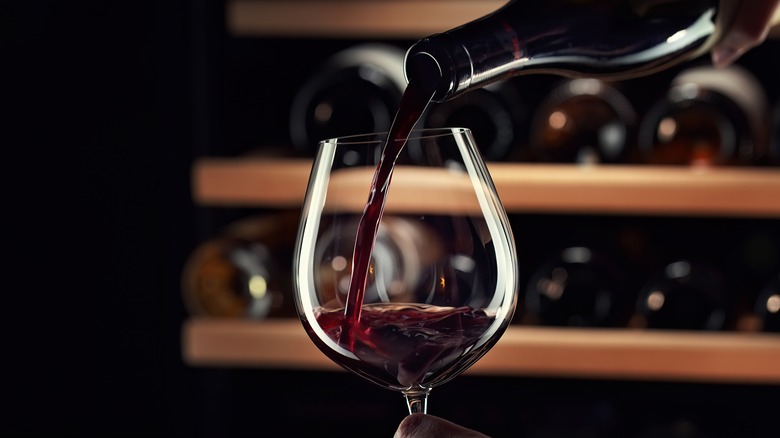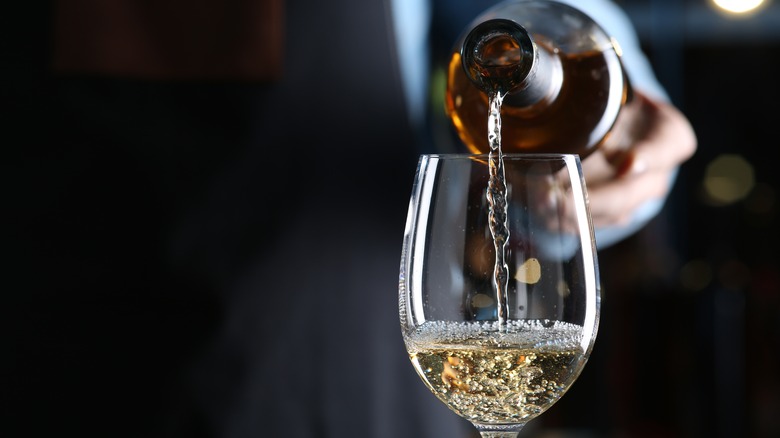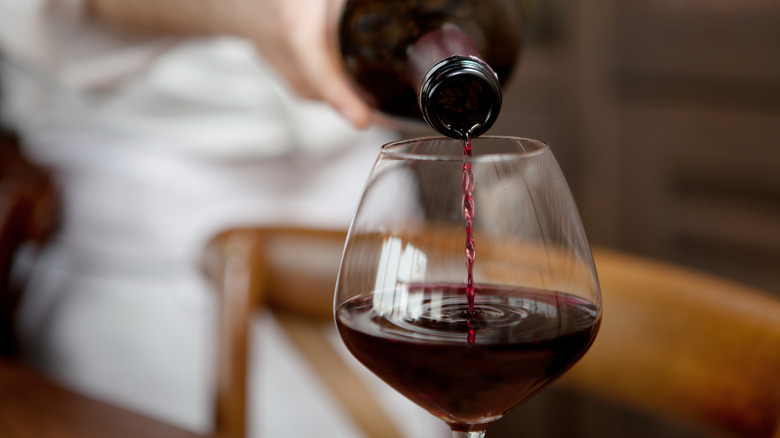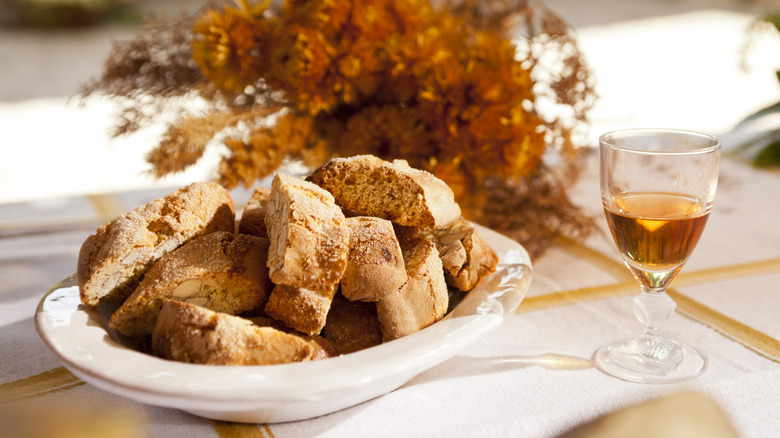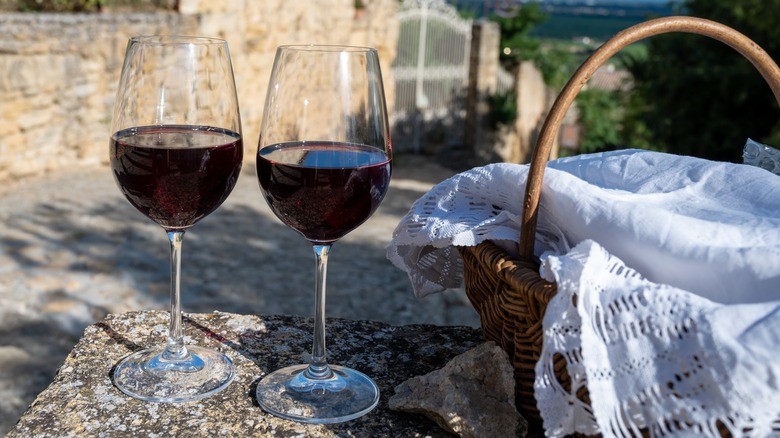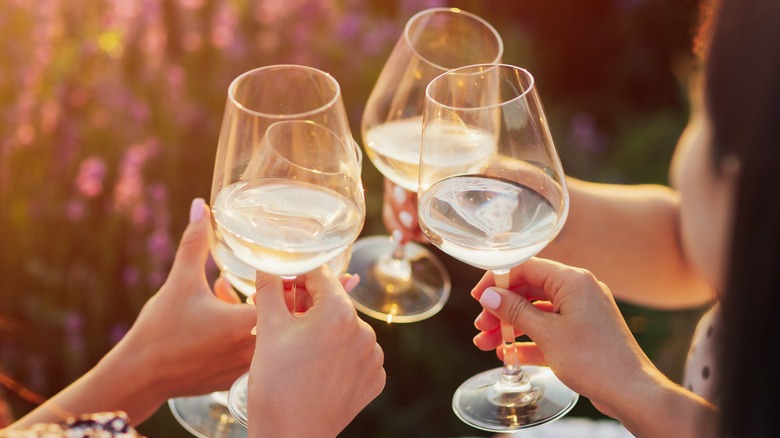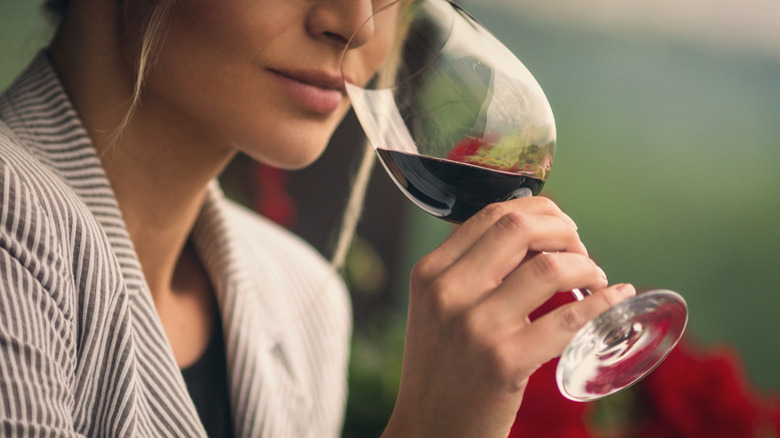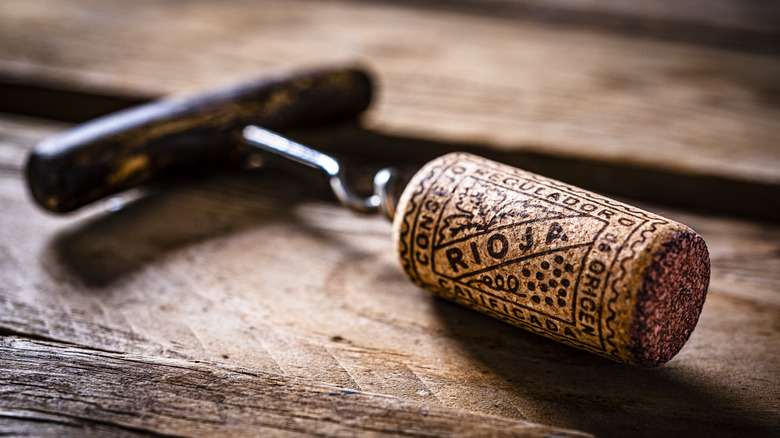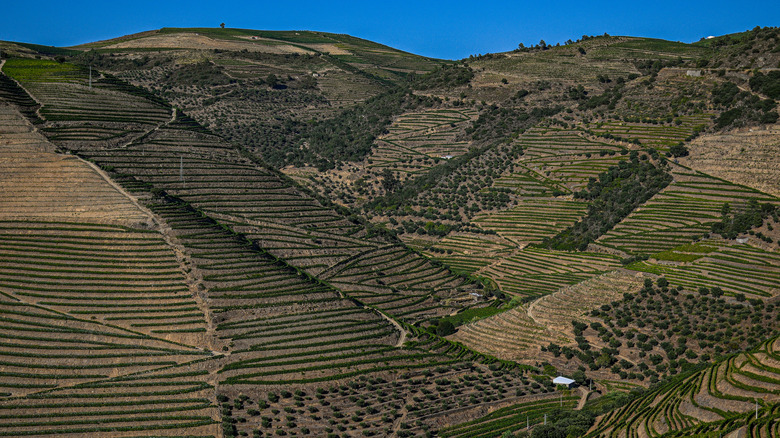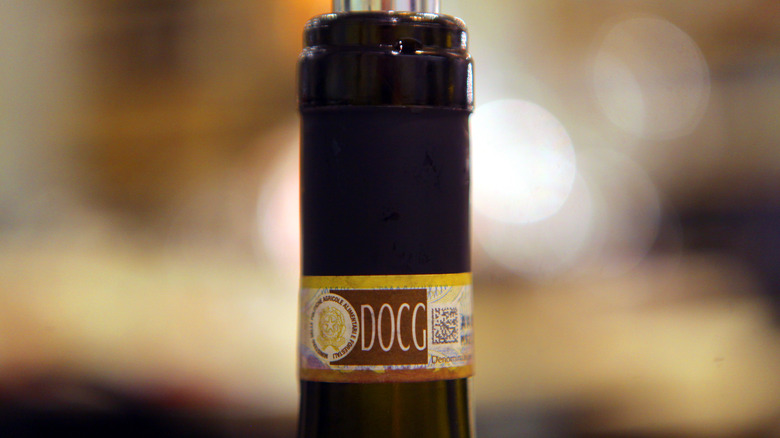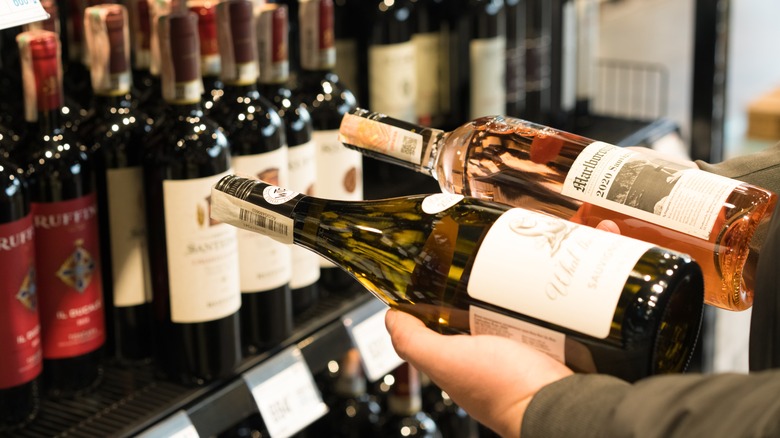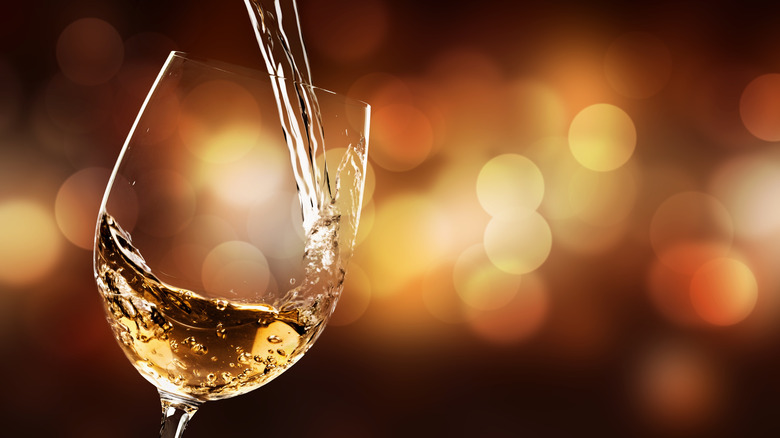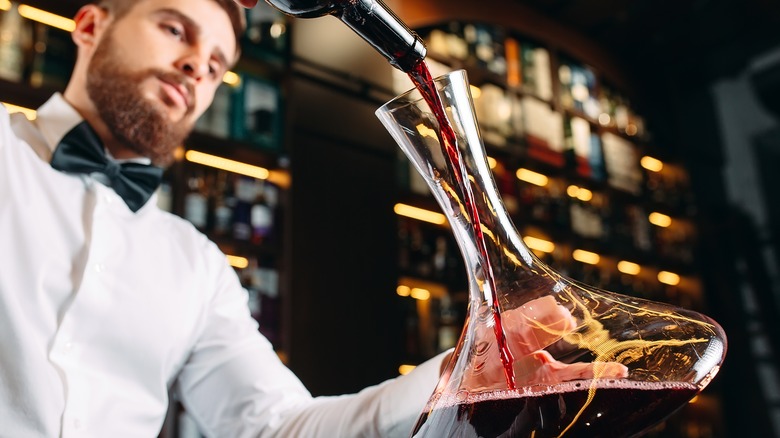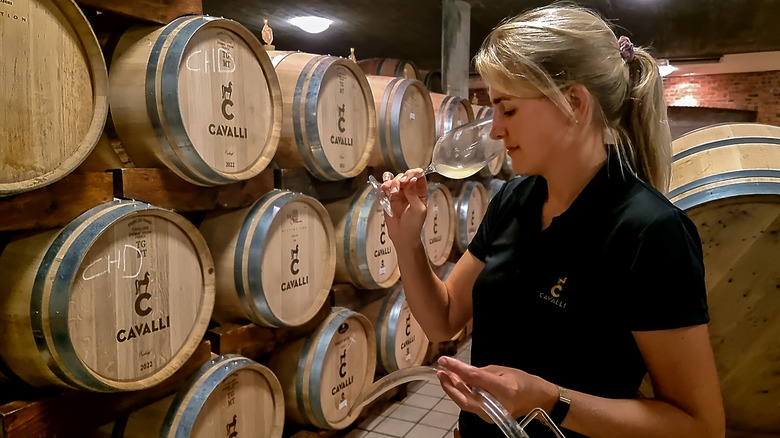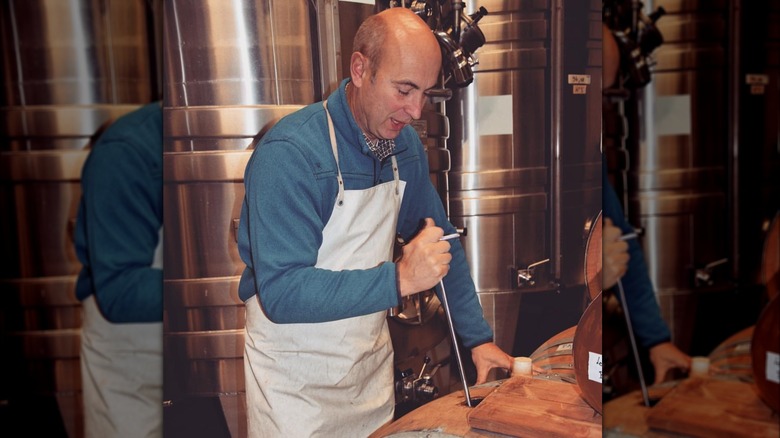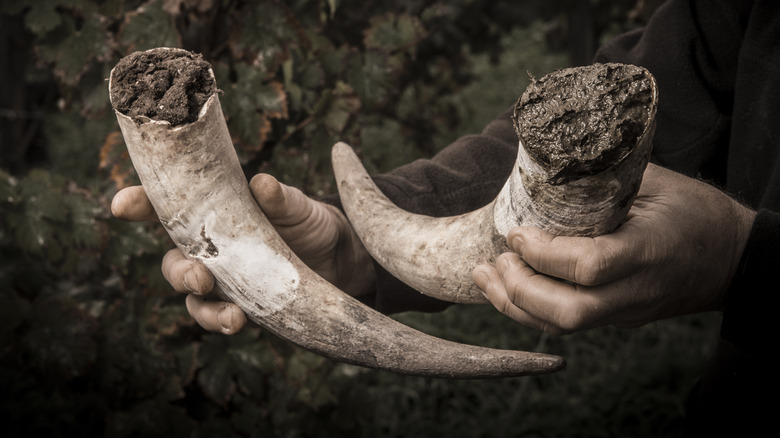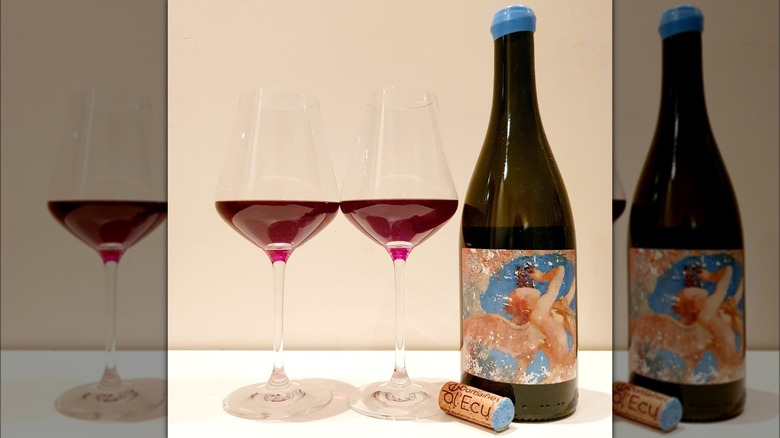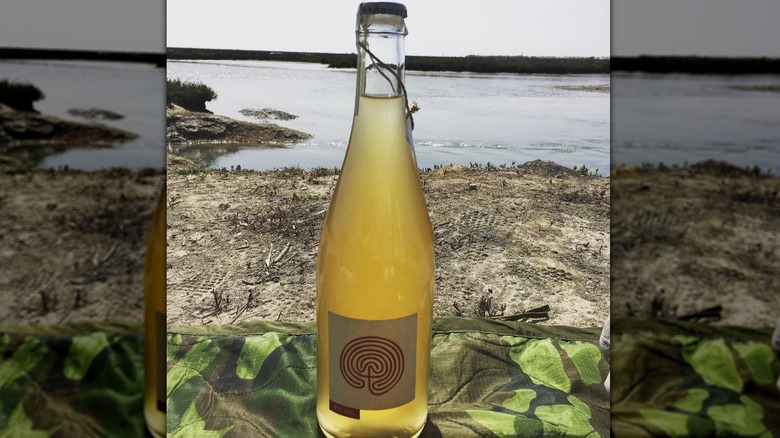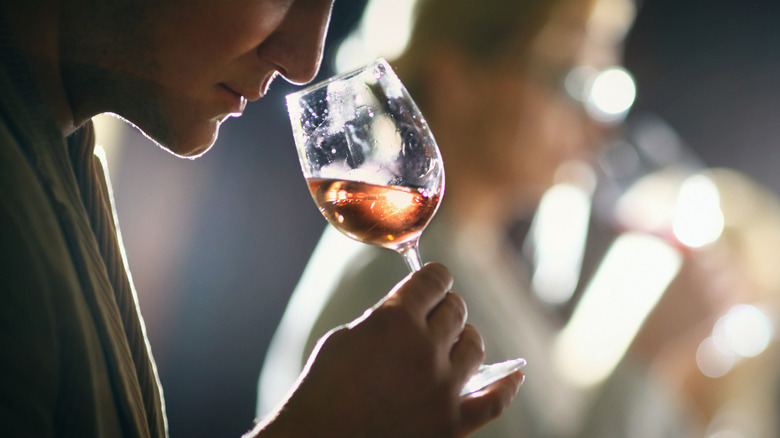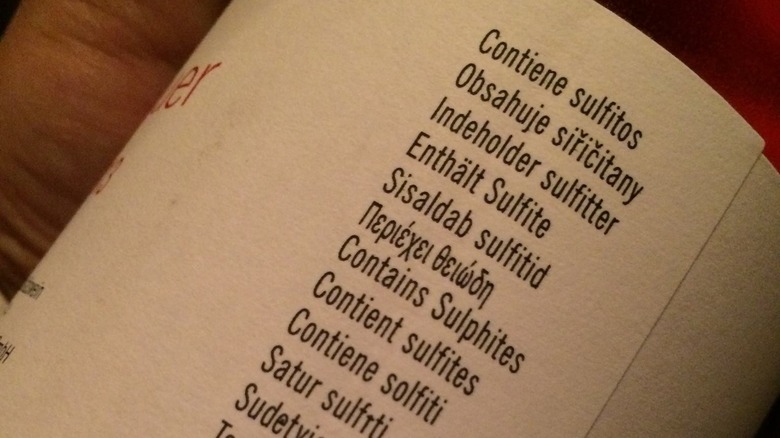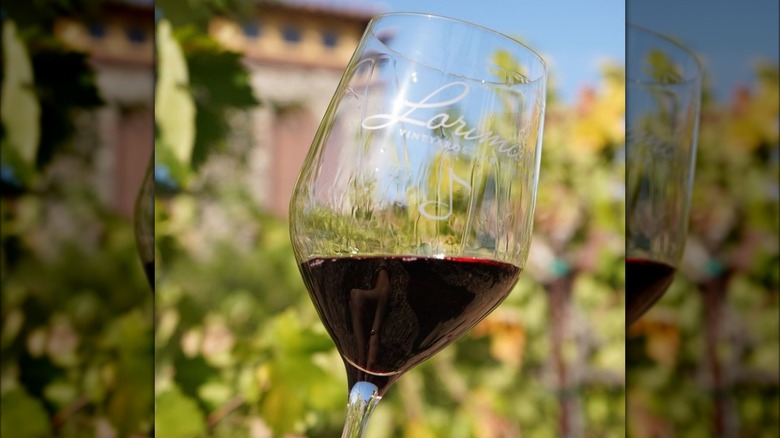25 Essential Wine Terms You Should Know
If you've spent much time around self-professed wine connoisseurs or tried to read elaborate tasting notes for a bottle of wine, it quickly becomes evident that a vocabulary lesson may be in order. From novel terms used to describe the essence of wine to aroma descriptors that require you to have an in-depth knowledge of botanicals and tropical fruits, it can be hard for the average person to feel comfortable talking about wine.
Thankfully, unless you're planning to sit for an exam or take on a job at a wine bar, you don't need to understand all the complex nuances. Some wine terms are just superfluous and unnecessary to describe your drinking experience. Nevertheless, if you want to expand your wine terminology in order to be able to express yourself more precisely — or understand others as they describe a bottle — these are the essential terms you should become familiar with.
1. Body
As one of the most basic wine terms, being able to describe the body of a wine can tell you a lot about it. It ranges from light to full-bodied and refers to the weight of the wine in your mouth. Consider the difference between a glass of water and a milky cappuccino and you can imagine the distinction when it comes to wine.
The body depends on various factors, such as alcohol and sugar content, tannins, oak influence, and the grape variety itself. Wines with a fuller body pair well with heartier foods, whereas lighter-bodied wines are great with delicate fare or for solo sipping.
2. Acidity
Acidity as a concept is pretty straightforward; if a wine is high in acid, it will make your mouth water. Chemically, the pH level is on the lower end of the spectrum and it usually comes from regions with cooler climates where grapes can't ripen as fully.
Factors such as sweetness and food pairings can affect perceived acidity. If a wine has significant levels of sugar too, the result tastes less acidic than a dry wine with the same amount. High-acid wines are the perfect palate cleanser for salt and fat, so they make a great match for greasy foods.
3. Tannin
It's hard to forget a very tannic wine, as the astringent quality completely dries out your mouth. Thankfully, there's a spectrum of tannins that ranges from non-existent to prominent. Grape seeds and skins are responsible for their presence, which explains why they are mostly found in red wines.
To make red wine, the juice must be in contact with the skins for anywhere between a few days to a few months. On a chemical level, the skins contain compounds that group together to form large molecule chains. Eventually, these can be sensed on the palate, giving way to the feeling of astringency.
4. Residual sugar
When grape juice ferments to produce wine, the yeasts consume the sugar in the fruit. If the fermentation stops before all the sugar is turned into alcohol, the remainder is referred to as the residual sugar. Although many wine drinkers eschew it, residual sugar has a greater role than simply making a wine taste sweet.
High-acid wines can taste softer and more palatable with a touch of sugar, much like lemonade is an improvement over straight lemon juice. Off-dry wines start at 10 grams of residual sugar per liter, which is around when the average consumer begins to perceive sweetness.
5. Dry
As one of the most overused terms among consumers, a dry wine has almost no residual sugar. Not to be confused with the dryness you experience from tannins, dry wines are by definition not sweet. A touch of sugar can still creep in as the category applies to wines with up to 10 grams of residual sugar per liter, although some regions limit it to 4 grams per liter.
Regardless, most table wine is dry unless it is off-dry and perceptibly sweet or a dessert wine. If you want advice on choosing a bottle, consider using aroma descriptors rather than asking for something dry.
6. Dosage
There's no funny business here — dosage refers to a mixture of wine and sugar added to Champagne in the last stages prior to corking the wine to let it mature. More specifically referred to as liqueur de dosage, this important element helps balance out the natural acidity of Champagne and determine the final sweetness of the sparkling wine.
Bottles labeled zero dosage or brut nature contain no added dosage and range from extra brut to doux, depending on the style of bubbly produced. Most types of Champagne on the market are brut and contain up to 12 grams of sugar per liter.
7. Minerality
Minerality may be one of the most disputed terms in the industry. Whereas some people identify key features of soil and rock composition on the palate, others argue against the notion that these qualities can be transferred through a vine.
Elements such as flint, ash, granite, stone, oyster shells, chalk, and salinity are among the descriptors that fit under the umbrella of minerality. The term refers to both aromas and textures, encompassing a range of sensations. Certain regions are especially known for these qualities, such as Chablis and its limestone soils and areas where vines grow in volcanic rock.
8. Structure
The structure of a wine takes into account various facets that come together in the bottle. Acidity, sweetness, alcohol, tannin, and body all work in tandem to produce the result you taste in the glass. Other aspects like fruit notes and oak can also impact the structure of a wine.
Ultimately, all wines have a structure, but the main question is whether it's working or not. When a wine is overly high in one parameter, say acidity, without the body or sweetness to round it out, its structure is compromised.
9. Balance
Everyone's looking for balance in some aspect of their lives, and winemakers are no different. While moderation is one form of balance, the term is used to describe the structure of a wine. If the main elements — alcohol, sugar, tannin, body, and acidity — are complementary and none overwhelms the rest, a wine is considered balanced.
Grapes do not always express optimal levels of ripeness, which can affect the resulting wine. However, winemaking practices such as oak aging or chaptalization (adding sugar to grape juice) can be used to bring the wine into balance.
10. Corked
The dreaded word: corked. Not all bottles with a cork are corked and some with screwcaps can be corked; the term refers to wine that has been affected by TCA, a compound that stems from fungi or mold in bark. The effect is unpleasant and causes wine to smell and taste musty, like a wet dog or damp basement. Fruit flavors are typically obscured, and the wine can taste bland and flat.
Corked wines can be perceived differently due to individual variations, and wines can also be tainted to a greater or lesser degree. Although TCA isn't harmful, if you think your wine is corked you can return it.
11. Terroir
Considering terroir might sound over the top if you're used to buying your wines at 7-Eleven. However, this characteristic sets apart wines from different regions, and in some cases, distinguishes features of neighboring vineyards. If you've ever wondered why pinot noir from France and California taste different, terroir is partly responsible.
The overarching term primarily consists of the geographical conditions of a wine-growing area, such as climate, soil, topography, and even the microbiome present among the vines and in the cellar. Additionally, the winemaking traditions of a region can influence how the terroir displays itself in a wine.
12. Appellation
Considering the many ways of categorizing wines, it makes sense that laws and guidelines are set into place in order to highlight specific areas. An appellation consists of a designated area with particular features and grape varieties. Bottles are labeled accordingly and must be made following a set of rules in order to maintain their classification.
Countries around the world have their own appellations, including PDO (Protected Designation of Origin), AOC (Appellation d'Origine Contrôlée) in France, and AVAs (American Viticultural Areas) in the U.S. These labels are beneficial for producers and consumers and help satisfy expectations.
13. Vintage
Vintage fashion always means old, but vintage wine doesn't have to mean a dusty bottle. In the wine world, a vintage simply refers to the year the grapes were harvested. In some cases, grapes from multiple years are blended, in which case the wine is considered non-vintage.
Champagne is commonly made by blending grapes from different vintages, which makes a single-vintage bottle especially prestigious. Unless you're collecting bottles to age, you don't have to worry too much about vintage — as long as it wasn't a disastrous growing season. If you're shelling out a lot of cash, check the vintage charts for sought-after regions to help you make an informed decision.
14. Bouquet
The term might be more familiar in the context of flowers, but the bouquet of a wine can be equally dazzling. Whereas a wine's aromas are usually highly dependent on the grape variety in question, the bouquet is a product of fermentation and aging.
The type of vessel used to ferment a wine can impact the bouquet, as is most evident when new oak is involved. Notes of vanilla, toast, and spice may all come through during the winemaking process. Meanwhile, as wine ages the fresh fruit aromas evolve and give way to notes of dried fruits, nuts, and spices. These all comprise the wine's bouquet.
15. Aerate
If the image of someone swirling their wine glass makes you scoff, it might be worth understanding why people do it. Swooshing the liquid in the glass allows oxygen to pass through, in a process known as aeration. Not all wines need to breathe, as the oxidation can damage delicate or older styles.
On the other hand, bold red wines with heavy tannins could do with some oxygen to tame the astringency. As well, the process can enhance the flavors in a wine so you can enjoy it more readily. Swirling your glass will help a bit, but if you want to get the full effect then purchase an aerator.
16. Decant
At its most basic, decanting simply means transferring something from one container into another. In the case of wine, it often includes a fancy glass vessel that comes in assorted shapes and sizes. The purpose of decanting wine is twofold; as you pour the liquid from the bottle into a decanter, some aeration occurs as oxygen is introduced.
Meanwhile, aged wines benefit from being decanted because sediment collects at the bottom of a bottle over time. Decanting the liquid helps you avoid pouring the matter into your glass. If the cork is brittle and breaks into the wine as you open the bottle, decanting is a suitable method to separate it out.
17. Cuvée
French vocabulary regularly makes its way into the wine world, and cuvée is a fine example. The term has various meanings, such as referring to a particular blend — be it of different grapes, vintages, or vineyards.
In many cases, cuvée consists of the finest juice from the first pressing of the grapes. Also known as free-run, this juice is often separated to make premium wines thanks to its pure expression. For example, tête de cuvée Champagne is considered the best in a producer's range.
18. Lees
They don't sound appetizing, but lees — aka dead yeast cells — can seriously enhance a wine. Although the larger particles are filtered off the wine, winemakers may choose to leave finer lees behind. As the wine ages, cellar hands regularly stir the matter into the wine to improve the texture and mouthfeel.
Aside from rounding out the wine and creating a more luscious palate, lees can also improve the taste. Yeast cells contain proteins and sugars that offer a rich creamy flavor, with a nuttiness and notes of brioche. White wines are more often aged on the lees, such as Champagne which is a prime candidate.
19. Biodynamic
Biodynamics pertains to agricultural practices of all types, including viticulture. The overarching notion behind the method of farming is viewing the particular environment as a whole organism. Different components must work together in tandem to be in harmony and thrive.
Various practices fit under the biodynamic umbrella, such as farming in accordance with the moon cycles and specific root and flowering days. Since chemicals are off limits, different organic preparations are made with compost, manure, and even cow horns, in order to improve the quality of the soil and the overall functioning and equilibrium of the environment.
20. Natural
Natural wine isn't strictly defined, which leaves room for ambiguity for consumers and among winemakers. Considering there are no set rules, it's worth determining which elements you care most about in the vineyard and cellar. At its basis, natural wine should be made with nothing added or removed.
Most people in the industry agree that the grapes should be farmed organically using no herbicides or pesticides. Biodynamic practices are welcome too, and native or ambient yeasts are prized over adding cultured yeasts to produce alcohol. As well, natural wines are commonly unfiltered and unfined, resulting in a cloudy appearance and retaining the essence of the product.
21. Unfiltered/Unfined
Just as it sounds, unfiltered wine skips the filtering process that removes larger particles. Winemakers may still choose to use a larger filter to eliminate the weightier bits, and over time, the smaller particles tend to fall to the bottom of the tank. The wine can be transferred into a different vessel leaving the sediment behind, although the result may still appear cloudy or hazy.
Fining involves adding a compound to the tank to bind with the smaller particles floating in the wine. As they come together, the particles become weighty enough to drop to the bottom of the tank, allowing the winemaker to separate them. Natural wine eschews these processes since they remove an element from the wine.
22. Nose
The nose of a wine is fairly self-explanatory and consists of its smell. Distinct from the taste, the nose relies on your olfactory senses and doesn't involve ingesting any liquid. While a straightforward sniff will convey part of the nose, there's more to it. Active inhalation is done by breathing through your nose and mouth, helping you detect more aroma compounds.
Although the nose of a wine won't tell you everything about its taste, you should be able to sense aromas such as notes of fruit, oak, and spice. Additionally, if there's something wrong with the wine — say, if it's corked — the nose can help you identify the flaw.
23. Sulfites
Sulfites are demonized and thought to be the source of headaches and all other ill feelings related to alcohol consumption. Of course, the truth is more nuanced, and countless foods that are pickled, canned, or dried, contain far more sulfites. Nevertheless, a small percentage of the population is allergic to the compound and experiences symptoms such as respiratory troubles.
Sulfites serve the purpose of preserving wine in the cellar and in the bottle. While natural and low-intervention winemakers often prefer to skip the addition, they can largely improve the shelf life in small quantities. Not to mention, grapes naturally contain sulfites so they will always be present to some degree.
24. Wine legs
The wine legs hashtag on social media might cause confusion, but the term does not refer to limbs. Instead, the legs (aka tears) are the droplets that cling to the glass as you swirl your wine. If you do the same with water, you won't notice much on the sides of the glass, whereas some wines really leave their mark.
The actual process that explains this occurrence involves physics, fluid dynamics, and the surface tension of the liquid. More simply, legs are most common in wines that have a higher alcohol or sugar content and can offer some insight into what to expect in your glass.
25. Finish
All good things come to an end, and a wine's finish is no different. Much as it sounds, the finish comes at the end of your sip, after you've consumed the wine. If the flavor dissipates immediately, the wine has a short finish. On the other hand, if the sensation on your palate lasts for several seconds after you swallow, then the finish is considered moderate or long.
Less complex wines tend to have a shorter finish, whereas those with more nuanced aromas tend to linger longer. Aside from the length, a finish can fade away or evolve from the first sip. This feature of wines can be impacted by characteristics such as tannins, acidity, and alcohol level.
